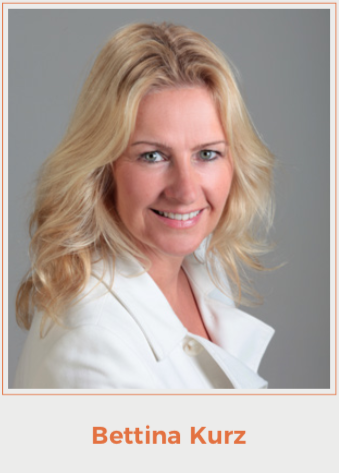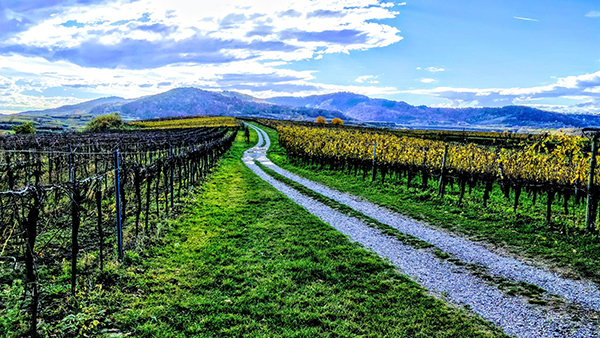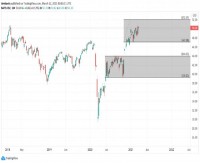|

Matthias Knab: This is where I grew up - and moved back after having wandered some 30+ years around the planet. My great-grandfather financed the purchase and establishment of the Knab wine- growing estate, and this vineyard - the Engelsberg or Angel Mountain - is just five minutes by bike from my home. This region - the Kaiserstuhl or “emperor’s chair”, named after the Holy Roman Emperor Otto III who held court there on 22 December 994, is a small, volcanic massif which rises like an island from the Upper Rhine Valley. There, the sun shines stronger and longer than anywhere else in Germany. The Roman Emperor Probus lifted a ban on planting in these regions in 91 AD, and intensive viticulture developed since then. Over the last decades we could see that wore and more entrepreneurs and celebrities are investing in the world of wine. For affluent families and entrepreneurs, the purchase of a winery is an opportunity unlike any other, aside from the usual finer things in life, to invest in a unique, pleasurable business concept. The opportunity to work with a sumptuous product appeals to many, as does the ecological aspect of such a project, or - in my case - just being able to enjoy an overwhelmingly beautiful nature on a daily basis. 
Each May, the European bee-eater migratory bird arrives at the Kaiserstuhl from Africa to breed and have their young here. Today I am speaking with Bettina Kurz from Viva Business, a private office for international winery transactions. Matthias Knab: Bettina, who owns and purchases wineries? Bettina Kurz: These days, an increasing number of prominent individuals, managers and wealthy wine-loving entrepreneurs are turning their dream into reality. Of course, in addition to these career changers, purely financial investors and companies from within the wine industry are also looking to buy and invest in wineries. Between 2010 and 2020, Europe saw over 200 acquisitions and transactions within the wine business. This figure does not include the purchases of “smaller” wineries and vineyards. Very recently, a Belgian investor purchased a renowned Brunello winery for a nine-figure sum and an American/ Columbian investor acquired 20% of the French cult-winery Pomerol (Petrus). The Argentine magnate Alejandro Bulgheroni has invested over 120 million euros in Tuscany between Dievole, in Chianti Classico, Tenuta Meraviglia and Tenuta Le Colonne, in Bolgheri, and Montalcino, putting together330 hectares of vineyards in the most important territories of Tuscany. Celebrities such as Sting, Gianna Nannini, Brad Pitt & Angelina Jolie, Johnny Depp, David Beckham, Carlos Santana, Francis Ford Coppola and Sir Cliff Richard all own or have shares in wineries. This is also the case for corporate groups such as Knauf, Ferragamo, Lamborghini, Wolfgang Reitzle, Jack Ma (Alibaba), Rupert Murdoch and many others. International companies such as Chanel, the EPI Group and BlackRock as well as numerous companies from the beverage industry such as Henkel, Rotka?ppchen, Mumm and others have acquired wineries and associated businesses. Big names such as Antinori, Frescobaldi and Zonin for example, also invest in projects based in South America and China. With vineyards located all over the world, the choice of wineries is quite extensive. The range of wineries available on the market is vast; from large corporate- run wineries with luxury hotels or historic villas to simple acreages without any significant real estate to straightforward wine-producing businesses. Traditional, family-run businesses also come onto the market. Matthias Knab: Which are the most popular countries or wine regions from an investment perspective? Bettina Kurz: The most popular countries and wine regions for purchasing a winery are Italy (Chianti Classico, Brunello, Prosecco, Piedmont), and France (Bordeaux, Champagne, Provence), as well as Portugal, Spain, Germany and South America (Argentina, Chile and Uruguay). Or perhaps South Africa, where the German celebrities & entrepreneurs Beckenbauer, Scho?rghuber und Dornier are currently winegrowers. Whatever your preference, there are wineries available for purchase almost everywhere in the world. Together, France and Italy account for 32% of the world’s wine production. Portugal, with its still moderate prices, is currently a very attractive location for investors and buyers looking for wineries and hotels in wine regions. It is only a 1-2 hour drive from Porto Airport to the famous Douro Valley wine region. Matthias Knab: And why are wineries being put on the market? Bettina Kurz: The reasons for selling are as varied as for any company. Often there isn’t anyone to carry on the business, or the owner’s sales concept hasn’t been successful. Large wineries often accumulate significant debt due to substantial investments in new buildings or modern technology and are only able to find a solution through putting the business back on the market. Some choose to find an active or silent partner in order to expand further using fresh capital. With these funds, they plan on planting new vineyards or developing new distribution channels. There are many wineries that simply want to benefit from having an experienced entrepreneur on board. Matthias Knab: What are the pitfalls for interested private parties? Bettina Kurz: Every country and even every wine growing region has its own rules and regulations. It is not enough to simply approach a real estate agency and enquire about wineries on offer. An agent needs to have good connections in the area and have the following competences: expertise in the field of viniculture, the ability to value both real estate and land, the ability to assess the quality of the site and production as well as the ability to assess the business and the potential of the winery. Only expert consultation ensures a fair valuation. Many of the wineries that are officially on the market are not attractive from a business point of view; a house with a vineyard is far from being a functioning winery. In such cases, buyers have to factor in significant initial losses and high investments in bui ldings, technology and the vineyards themselves. It is the so-called off- market wineries with functioning business models, established brands and good financial health that are of particular interest. Many dream of a small winery for personal use and want to make this a reality by predominantly financing their purchase through outside capital. Be careful! Wine is a natural product and therefore its production is very much influenced by the unpredictability of nature. There will be both good and bad years. Matthias Knab: How do you value a winery? Bettina Kurz: The value of a winery is dependent on the following elements: real estate, land, vineyards, fixed assets (the condition of agricultural equipment and wine-making technology), wine stock both in bottles and in tanks as well as goodwill. One hectare of planted vineyard for example, costs up to €150,000 in Chianti Classico, in Montalcino a hectare of Brunello vineyard from € 400,000 onwards. In the Prosecco region of Valdobbiadene or the Champagne region in France, vineyards reach up to € 1.2 million per hectare. In Portugal’s Douro Valley, prices start at approx. €50,000/ha. Wineries in less established regions are naturally significantly less expensive. But developing a brand there and establishing it on the market is virtually impossible these days, even for sales and marketing experts. The process of acquiring a winery is the same as with any company. The signing of the confidentiality agreement is followed by a letter of intent from the interested party in order to access financial data and to carry out a due diligence check if necessary. A proof of funds is required for larger wineries and businesses. Matthias Knab: What is the minimum amount of funds needed to invest? Bettina Kurz: The value of a winery lies predominantly in its assets, i.e. purchase is based on earning capacity - notably, value of vineyards in the well-known regions is increasing. Wineries can be purchased for between approx. € 3m and € 300m, or even more. There are diverse options depending on the budget of an interested party, their wine preferences and the use they envisage for the winery. Is the aim to buy a small winery in Tuscany for hobby purposes or rather a renowned winery in Margaux? Matthias Knab: Can you also tell us more about returns and cost? Bettina Kurz: Reputation is all well and good, but a winery should also be economically viable in the long term. The grapes may grow by themselves, but the wine is another matter. The dream of having your own profitable winery will only come to fruition through professional work, the right decisions, sound assessments and good business sense. Wine business is also people business! Purchasing a winery includes developing long term strategies to open up new international distribution markets so that sales and profits rise. Turnover is generated from the sale of wine to importers and regional sales to wine bars and restaurants as well as direct sales to private customers at the winery. The cost of exporting wine from a winery to different countries varies considerably, meaning that it is almost only profitable for wineries in known wine regions e.g. a bottle of Brunello Montalcino DOCG can be sold to an importer for between € 15 and € 25, but the price of a bottle can cost up to € 50. A good bottle of Margaux can reach between €150 and € 300 or even more (export price). Other opportunities include switching to organic certification, biodynamic production methods, the production of kosher, natural or vegan wines etc. to tap into existing niche markets. Increasing quality, participating in international wine competitions and receiving awards, certificates and points are further possibilities. In some countries, such as Canada for example, an international award is required in order to sell the wine. Expansion is possible through the purchase or leasing of more vineyards to increase production. An interesting opportunity lies in becoming an active or silent partner / part owner in a winery. Investing in this way means that one or more people can participate, which saves costs as well as transfer tax. To give you more specific example of costs, a vineyard in the Chianti Classico region, approx. 10 years old, has approx. 6,500 vines. Each vine costs approx. € 1.20 per year, including all manual work such as pruning, defoliation etc, as well as necessary tractor work. The cost for the production of a bottle in the winery ranges between € 1.00 and € 1.50. Matthias Knab: From the perspective of an owner or investor, what are the options to actually manage a winery? Bettina Kurz: 20 years ago, a buyer of a winery would have had to manage everything themselves. This is now rare. Entrepreneurs and private individuals, who purchase a winery today, generally don’t have the time for the day-to-day running of the business and rely on specialized companies for support. Such companies, for example, can put an interim management team into place after purchase, to work with renowned oenologists and agronomists to advise on the strategic future orientation of the winery. A good export manager for the distribution of own wines doesn’t need to always be present at the winery, they can also work in the vicinity of the new owner. Specialized regional consulting firms offer expertise in terms of investments and agricultural subsidies. Such firms will put together the necessary EU documentation on a commission basis. Matthias Knab: Any thoughts regarding the exit? Bettina Kurz: Well-known wineries with a good brand and marketing strategy are very much in demand. For those whose aim is to sell on the winery they are purchasing, it is important to choose a winery with an already established brand and international customer base. | ||||
|
Horizons: Family Office & Investor Magazine
Bettina Kurz: Love wine? How to buy a winery |
|





 RSS
RSS








